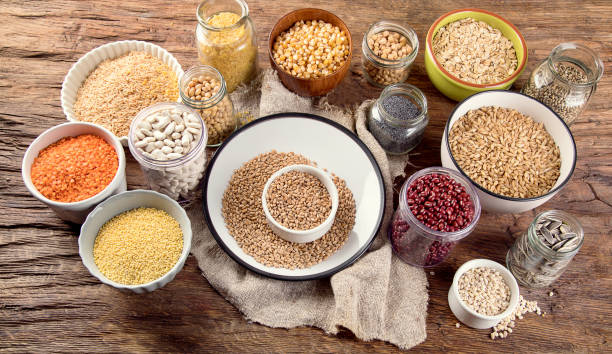Unearthing the Health Benefits of Ancient Grains
The world of health and wellness is constantly evolving. Yet, sometimes, the most effective paths to improved health are not those forged by cutting-edge technology or medical breakthroughs, but the ones that trace back to our ancestors. Enter ancient grains, the nutrient-rich powerhouses that have sustained civilizations for millennia. Let's embark on a journey to discover the exceptional health benefits of these dietary gems, and why they deserve a place in our modern-day meals.

The Story of Ancient Grains
Ancient grains, as the name suggests, have a long history. They were the first crops cultivated by our ancestors and have remained largely unchanged for thousands of years. Unlike modern grains that have been selectively bred or genetically modified, ancient grains retain their original nutritional profile, making them a rich source of essential vitamins, minerals, and fiber.
The variety of ancient grains is vast, including quinoa, amaranth, spelt, millet, and teff, to name a few. Each has a unique set of benefits, but all share common traits — they’re nutrient-dense, naturally gluten-free, and have a low glycemic index, making them an excellent choice for health-conscious individuals.
The Health Revolution of Ancient Grains
In recent years, health experts have begun to recognize the potential of ancient grains in combating modern-day health issues. Research has linked the consumption of these grains to reduced risks of heart disease, diabetes, and certain types of cancer. They are also praised for their role in weight management and gut health, thanks to their high fiber content.
Moreover, ancient grains are a boon for people with gluten intolerance. As they are naturally gluten-free, they offer a healthy and varied alternative to the often nutrient-poor, gluten-free products available in the market.
Challenges and Opportunities
Despite their impressive health benefits, ancient grains are not as widely consumed as they could be. One reason is their unfamiliarity. Many people are unsure how to prepare and incorporate them into their meals. However, the versatility of ancient grains is one of their strengths. They can be used in a variety of dishes, from salads and soups to bread and desserts.
Moreover, the slightly higher cost of these grains compared to modern grains can be a deterrent. Yet, considering their nutritional superiority, they offer excellent value for money in the long run.
Practical Health Tips
- Start by introducing one ancient grain into your diet at a time. This will allow you to experiment with different flavors and cooking methods.
- Use ancient grains as a healthier alternative to rice or pasta. For example, try swapping your usual pasta for quinoa in your next salad.
- Don’t be afraid to get creative. Ancient grains can be used in both savory and sweet dishes.
- Remember that while ancient grains are healthy, they are also calorie-dense. So, portion control is key, especially if you’re watching your weight.
In conclusion, ancient grains have stood the test of time for a reason. They are a powerhouse of nutrition, offering a wide array of health benefits. By incorporating these grains into our diet, we can take a step towards better health, proving that sometimes, looking back can be the best way to move forward.




